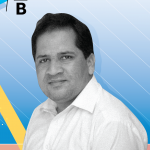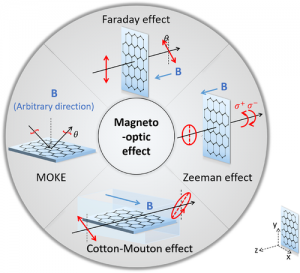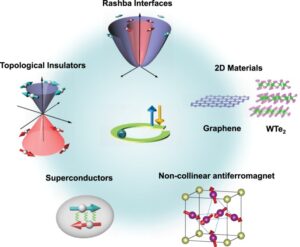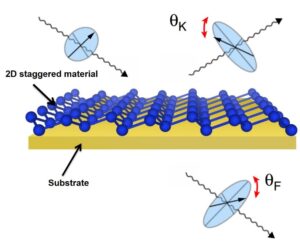| Researchers | Muzamil Shah, Ph.D. Scholar |
| Time Frame | August 2021 |
| Supplementary Materials | Thesis: Magneto-optic Effects in 2D Quantum Materials |
| Description | |
Magneto-optic Effects in 2D Quantum Materials دوجہتی کوانٹم مادوں میں مقناطیسی نوریات کے مظاہر مزمل شاہ تجربہ گاہ برائے کوانٹم ٹیکنالوجیز، شعبۂ طبیعیات سید بابر علی سکول برائے سائنس اور انجینئرنگ، لمز
Magneto-optic effects are attracting wide interest as they render contactless, potentially power-free, highly sensitive and spatio-temporal resolved techniques for both magnetic material characterization and light manipulation. On the one-hand magneto-optics is important for fundamental research; and on the other hand, it is vital to many technological applications such as optical communication, data storage, phase modulator, optical isolator, remote sensing of magnetic fields, and other laser applications. The field of magneto-optics broadly deals with the interaction of electromagnetic waves with magnetism. Faraday and Kerr rotations are non-reciprocal magneto-optic (MO) effects, in which the polarization of a plane wave is rotated when linearly polarized light is respectively transmitted or reflected from a transparent medium in the presence of static uniform perpendicular magnetic field. Both of these effects originate from the breaking of time reversal symmetry induced by the applied magnetic field. It would not be wrong to say that all materials are quantum in nature. However, in modern usage, a material is deemed ‘quantum’ when the wavefunctions of electrons are wrapped up like a complicated knot. Novel emergent phenomena are often seen due to the interaction of electronic states. The term emergence is used to evoke cooperative behaviour of a large number of microscopic constituents, like charges and atoms resulting in phenomena that are qualitatively different than the behaviours of the individual constituents. In other words, a system with strongly correlated electrons, the rich variety of topologically ordered states, the existence of Dirac fermions or interactions between electrons, spins, magnons, polariton, phonons, etc. are generally considered to be defining characteristics for a material to be ‘quantum’.
2D quantum materials e.g., graphene, silicene, transition metal dichalcogenides and black phosphorus exhibit many distinctive electronic, magnetic, and optical properties compared to the bulk materials. The optical, magnetic, and electronic properties of the 2D quantum materials are closely related to magneto-optic effects. For example, graphene exhibits an exceptionally large Faraday and Kerr rotation in the THz region and therefore is considered a futuristic candidate for non-reciprocal tunable devices. The magnitude of FR is about 6o in a field of strength 7 T. Unfortunately, the FR and magneto-optic Kerr effects (MOKE) observed in a single layer graphene sheet exist only at low frequencies (< 3 THz) and that too in the presence of large magnetic fields.
In the present work, we focus on the magneto-optic responses of 2D silicene and hybridized topological insulators. The behavior of these quantum materials under the influence of external fields, for example, electric and magnetic fields, is dictated in a highly non-trivial manner including the possibility of topological phase transitions. In the first part, we use a semiclassical treatment to describe the Faraday rotation (FR) and magneto-optic Kerr effect (MOKE) which can be modulated both electrically and magnetically in the terahertz regime. All in all, very large FR and MOKE can be achieved.
In the second part, we studied the Goos-Hänchen and photonic spin Hall shifts for light beams impinging on the surface of 2D quantum material-substrate systems in the terahertz regime. We show that giant positive and negative quantized spatial and angular beam shifts can be obtained by tuning the angle of incidence in the vicinity of the Brewster angle. We demonstrate that the in-plane and transverse spatial spin-dependent shifts are quantized due to the Landau level (LL) quantization of the magneto-optic conductivities. The Goos-Hänchen and photonic spin Hall shifts have potentials applications in surface sensors, spin-dependent beam splitters, precision meteorology and quantum information processing. | |



